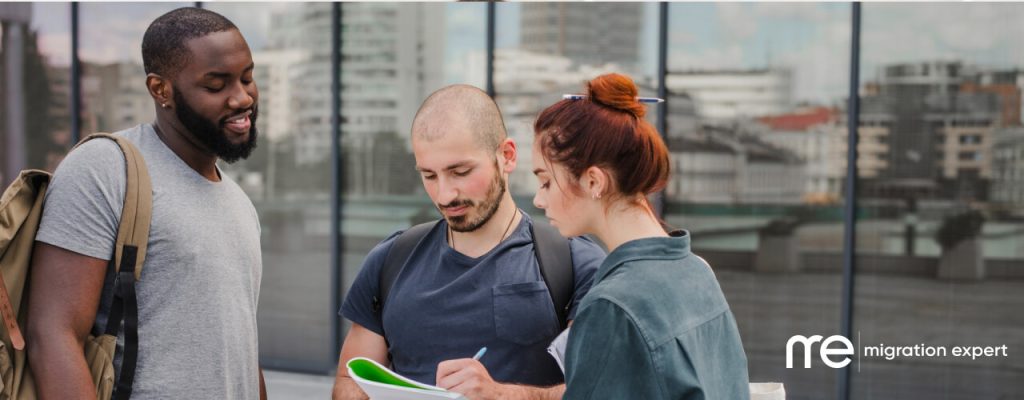Over the last few decades, Australia has emerged as a popular destination for people from around the globe, including those born in the United States. According to the Australian Bureau of Statistics (ABS), the number of U.S.-born residents in Australia has steadily increased from 1996 to 2023. This trend reflects not only Australia’s growing appeal as a destination for skilled professionals, entrepreneurs, and expatriates, but also the broader economic, cultural, and social ties between the two countries.
Let’s explore the key highlights of this growth and its implications.
Key Trends: U.S.-Born Population Growth (1996–2023)
The data shows that the U.S.-born population in Australia has risen consistently over the past 30 years:
- 1996: There were approximately 56,050 U.S.-born residents living in Australia.
- 2006: A decade later, this number had surged to 74,670, reflecting a significant increase of over 18,000 people.
- 2011: The number continued to rise to 90,090, coinciding with Australia’s economic boom and high demand for skilled workers.
- 2023: By 30 June 2023, the U.S.-born population in Australia reached 114,260, showing a substantial growth of over 58,000 people since 1996.
This upward trend suggests that Australia remains an attractive destination for U.S. nationals seeking new opportunities or a change of lifestyle.
Drivers of Growth: Why Are More U.S. Citizens Moving to Australia?
Several factors have contributed to the steady increase in U.S.-born residents over the past few decades:
1. Career Opportunities and Lifestyle Appeal
Australia’s strong economy, particularly during the 2000s and 2010s, made it a top destination for skilled workers, including many from the U.S. The country’s growing tech, finance, and healthcare sectors, coupled with its high quality of life, have made it an appealing choice for professionals and families alike.
2. Ease of Migration for Skilled Workers
Australia has long had a points-based migration system that favours skilled workers, and U.S. citizens have benefited from this due to their qualifications and work experience. Visa programs such as the Temporary Skill Shortage (TSS) Visa (subclass 482) and Permanent Skilled Migration visas have been key pathways for many U.S. professionals.
3. Education and Business Opportunities
Australia is home to world-renowned universities and research institutions, attracting American students, academics, and entrepreneurs. Many U.S.-born residents have also chosen Australia for business ventures, capitalising on its stable economy and business-friendly environment.
Economic Impact: U.S.-Born Residents Contributing to Australia's Workforce
The increase in U.S.-born residents has had positive effects on Australia’s workforce and economy. With many U.S.-born migrants holding higher education degrees and specialised skills, they have contributed significantly to sectors such as technology, finance, engineering, and healthcare.
Furthermore, the presence of U.S.-born entrepreneurs and business professionals has fostered increased trade and investment between Australia and the U.S., enhancing economic ties between the two countries.
Cultural Integration and Community
The U.S.-born community in Australia has integrated into the broader Australian society while also maintaining cultural connections to their home country. Organisations such as Americans in Australia and U.S. expat groups help build a sense of community, celebrating American traditions while embracing Australian culture.
This cultural exchange has enriched the diversity of Australia, bringing new perspectives and contributing to Australia’s multicultural identity.
The Future: Continuing Growth and Opportunities
While global events like the COVID-19 pandemic temporarily slowed immigration rates, the long-term trend of U.S.-born residents moving to Australia continues upward. The strong ties between the two countries, combined with Australia’s ongoing demand for skilled workers, suggest that the number of U.S.-born residents will keep growing in the years to come.
Conclusion
The steady rise in the U.S.-born population in Australia, as shown by the ABS data from 1996 to 2023, reflects the strong attraction Australia holds for U.S. nationals. Whether for career advancement, education, business opportunities, or lifestyle, more U.S. citizens are making Australia their home each year.
As Australia continues to evolve as a global destination for skilled professionals and entrepreneurs, the U.S.-born population is likely to remain a key component of the country’s diverse and dynamic society.
Data Source:Australian Bureau of Statistics (ABS), Estimated Resident Population by Country of Birth – 30 June 1996 to 30 June 2023, released 24 April 2024.
Related Reading
- Australia’s New Skills in Demand (SID) Visa Replaces the Temporary Skills Shortage (TSS) Visa – What does it mean to those with existing TSS applications
- Comparison of the Skills in Demand Visa (Subclass 482) vs. Temporary Skill Shortage (TSS) Visa (Subclass 482)
- Comprehensive Guide to the Core Skills Stream of Australia’s Skills in Demand Visa (Subclass 482)
- Explanation of the Specialist Skills Stream – Skills in Demand Visa (Subclass 482)
- Skills in Demand Visa (Subclass 482): New Changes, Eligibility & Pathways to PR in Australia
- Three-Tiered Pathway Structure of the Skills in Demand Visa (Subclass 482) Explained in Detail
- Australian Government Introduces Core Skills Occupation List: Major Overhaul in Skilled Migration Program
- Is the 482 (TSS) Visa Difficult?
- Navigating the Australian Temporary Skill Shortage (TSS) Visa Subclass 482
- Navigating Permanent Residency from a 482 Short-Term Stream Visa
- Can I Apply for PR While on a 482 (TSS) Visa?
- Navigating Employer Change on a 482 Visa in 2024: Your Essential Guide
- Navigating Sponsorship Change for Your 482 Visa: A Comprehensive Guide
- What Happens If I Quit My Job on a 482 Visa?
- Transferring Sponsors on a 482 Visa: A Guide to Navigating the Process in Australia
- What Happens if I Quit My Job on a 482 Visa?
- What is the Minimum Salary for a 482 Visa?
- Changes to Work Visas 482, 457, and 494 Effective July 2024. What Sponsors Need to Know
- Changes to Work Visas 482, 457, and 494: New Conditions Effective July 2024
- Understanding the New Work Experience Requirement for the 482 Visa: A Simplified Guide 2024
- Sponsorship Obligations of a 482 Visa Standard Business Sponsor
- What is the 482 Visa in Australia?
- Does a 482 (TSS) Visa Get Childcare Subsidy?
- Who Can Sponsor a 482 (TSS) Visa?
- What are the Cons of a 482 Visa?
- What are the Restrictions on a 482 Visa?
- How Can I Convert My 482 Visa to Permanent Residency (PR)?
- Can I Buy a House in Australia on a 482 Visa?
- What are the New 482 Visa Changes and the latest news?
- Can I Bring My Parents to Australia on a 482 Visa?
- Can I Get PR After 2 Years in Australia?
- Is a 482 Visa Eligible for Medicare?
- What are the Benefits of a 482 (TSS) Visa?
- How Long Does It Take from 482 (TSS) to PR?
- What are the stages of a 482 (TSS) visa?
- Can I Do a Second Job on a 482 (TSS) Visa?
- Can I Bring My Wife/Partner on a 482 (TSS) Visa?
- Working While Sponsored: Can You Have a Second Job on a 482 Visa in Australia?
- The 482 Visa Transformation: A Guide to Australia’s “Skills in Demand” Visa in 2024
- Mastering the TSS 482 Visa: A Detailed Guide to Skilled Work in Australia
Remember:
This post is for general informational purposes only and is not a substitute for professional immigration advice. Given the uniqueness of every case, engaging with a registered migration agent is highly recommended for bespoke guidance and to navigate the specific details of your situation effectively. Book a visa consultation with a Registered Migration Agent
Subscribe to our newsletter
Sign up to our weekly newsletter to get the latest news about all things visas & immigration.












